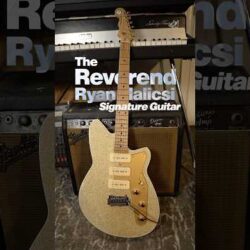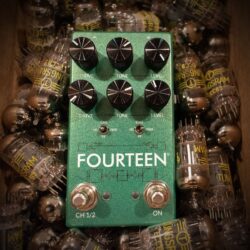
Fortin Annouce the Release of the Fourteen Dual/Boost Drive Pedal
Fortin Amplification unveil the FOURTEEN: A dual-channel drive/boost pedal with unparalleled power and versatility.Fortin Amplification is proud to announce the launch of the FOURTEEN, a groundbreaking dual-channel drive pedal born from the legacy of the acclaimed HexDrive. Originally developed by Mike Fortin for use within NeuralDSP’s Fortin plugins, the HexDrive quickly earned a reputation as the ultimate “screamer-style” boost for higher-gain guitar tones – and became a staple in the Fortin product line.Building on this proven foundation, Mike has integrated his sought-after TS-style modifications – the F9 and F808 – into the new FOURTEEN. The result is a pedal that delivers unmatched tonal versatility and raw power for modern players.Each of the FOURTEEN’s two identical, switchable, channels offers a selection of three distinct boost/drive modes, allowing users to shape their tone with precision and ease. With the addition of amp channel switching control, the FOURTEEN empowers guitarists to command their tone from a single, compact unit. The FOURTEEN is about control. It’s about power. And it’s about making sure you never sacrifice one for the other.Key features of the FOURTEEN Dual Boost/ Overdive include: 2 identical, switchable, channels;Each channel has 3 modes – HD, F9 and F808;Assignable amp switching, the FOURTEEN can switch the amp channel, giving the player control of which stomp changes the amp. It also allows the player to assign an amp channel to whichever channel of the pedal they prefer;Like every other Fortin pedal, the FOURTEEN is proudly made in the USA using only the highest grade materials selected for superior sound, response and reliability.
Read more »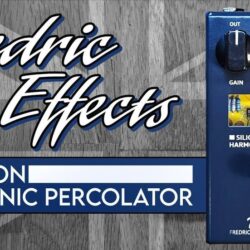
Announcing the Silicon Harmonic Percolator from Fredric Effects
With years of experience recreating the iconic Interfax Harmonic Percolator – a distinctive, rare and sought-after mid 70s fuzz pedal – Fredric Effects now offers the Silicon Harmonic Percolator. It’s a revised version that swaps the original germanium components for carefully chosen vintage silicon transistors from 1980s East Germany. Fredric Effects have been building a part-for-part clone of the original 1970s Interfax Harmonic Percolator for over a decade now, and an improved version of that hybrid Silicon/Germanium circuit as the Utility Perkolator for almost as long.The Harmonic Percolator circuit is simple and versatile, and careful component selection can yield fascinating results. This modified version of uses only silicon transistors manufactured 40 years ago in the former East Germany, and clips the signal using a weirdo East German diode array. This result is an effect which tightens and focuses the sound of the Percolator. The Silicon Harmonic Percolator sits somewhere between fuzz and distortion – clearer and more defined than a traditional fuzz, but still wild and saturated when pushed. It’s a distinctive evolution of a cult classic.
Read more »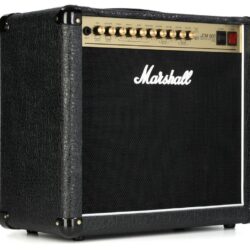
Marshall Studio 900 Review
Introduced in 2018, Marshall’s Studio Series amps are U.K.-made, compact, low-wattage renditions of past classics. They’re smart designs in light of the market’s turn to quieter, smaller amps, and they’ve earned Marshall kudos. Earlier Studio Series amps, like the SV20C and ST20C, were 20-watt mini versions of the original late-’60s Plexi and JTM45 models, respectively. Marshall also built Studio versions of the JCM800 and Silver Jubilee. Now, the JCM 900 Studio head and 1×12 combo captures the essence of the company’s high-gain sound of the ’90s.Replicating the experience and sound of the 900s—the 50- and 100-watt, trouser-leg-flapping monsters from the golden age of grunge and metal—with a 20-watt output stage isn’t easy. As with the previous Studio models, one key to success is the use of large 5881 tubes, but in a cathode-biased output stage driven by lower plate voltages than in the big-bottle amps of old. Along with the ability to retain the beefy, full-throated sound of the originals, this approach yields longer life from tubes that are built to withstand much harder use. And, since the output stage is cathode-biased, a tube change means simply popping in a new pair of 5881s and off you go, with no re-biasing necessary.Marshall aficionados will note that the JCM900 series amps were originally made with EL34 output tubes, and later 6L6s (which are direct substitutions for the 5881s used here). It was also fixed-bias rather than cathode-biased in both cases. In a circuit like this, though, the high-gain tone is driven much more by the preamp circuit, which is built around two 12AX7 tubes (plus another in the phase inverter). The Studio version also uses diode clipping to increase saturation levels in the style of the high-gain stage in the original 900 Series.Ground ControlThe JCM 900 Studio’s control layout follows a basic footswitchable two-channel topology with a shared EQ stage. Channel A is rhythm and channel B is lead. The knobs are for gain (the channel A preamp), lead gain (the channel B preamp), treble, middle, bass, presence, master reverb, plus master reverb and volume for channel A and master reverb and volume for channel B. There’s a push-button switch to engage the lead channel, but the included 2-button footswitch delivers that function plus reverb on/off. As part of Marshall’s mid-priced PCB-built range, the Studio Series might not fly with the top-shelf, hand-wired crowd, but inside, the construction is good-quality stuff.The robustly built combo cabinet measures 21″x18″x10″ and weighs 39.5 pounds and is dressed up in recognizably ’90s-era Marshall styling. The Celestion G12T-75 speaker within is shrouded by a ported back that’s much more closed than open, which should boost low-end girth relative to a more open-backed design. In addition to the 3-way output level switch, the rear panel includes two line outs (one standard, one recording compensated) with level control, effects loop send and return, one 16-ohm output for the onboard speaker, and outs for either 1×4-ohm, 2×8-ohm, 1×8-ohm, or 2×16-ohm speaker configurations.Expansively EnglishTested with a Gibson ES-355 and a Fender Telecaster, the JCM 900 Studio worked in perfect time-capsule-authentic ’90s fashion. Some players denigrate original 900 models for the fizz and sizzle that the solid-state, diode clipping adds to the lead tone. But 900s were used to make plenty of great heavy rock, grunge, and metal for decades, and by now, they are regarded as modern classics, especially for a certain set of ’90s-era tones. If you want those sounds, the JCM 900 Studio does the job very, very well. In fact, apart from the lower output making it less ideal for super-loud bands on big stages, it’s hard to hear how this new, smaller rendition suffers alongside an actual Model 4100.“The Studio 900 is a petite, 20-watt Marshall that punches like its ’90s heavyweight inspiration, the JCM900.”Channel A’s clean tones are useful, if not particularly characterful until you push the gain to edge-of-breakup territory. But it’s pedal-to-the-metal, guitar-god glory from the moment you stomp on the channel B switch. The key elements of 900 sounds—searing high-end bite, aggressive midrange, and low-end wallop— are all there in abundance. The dual master setup, lacking on much of the channel-switching competition, is a real bonus here, too. It enables you to rein in the rhythm channel independently to set up a broad spectrum of channel-to-channel dichotomies from smooth to jarring.Channel switching makes the JCM 900 a surprisingly versatile amp, and the three output levels (20 watts, 5 watts, and 1 watt) selectable from the back panel make it even more so. No, the 1-watt setting won’t sound exactly like the 20-watt mode with the masters maxed, because 1 watt of output power simply doesn’t push the speaker or fill a room with sound in the same way. But with so much of this circuit’s tone coming from the preamp anyway, it will churn out surprisingly heavy doom riffs at bedroom volumes. The inclusion of reverb was also a standard feature of the original 900 Series amps, and while it is generally unacclaimed in those amps, the effect acquits itself quite well in the Studio 900. And between the reverb and the effects loop, the Studio 900 is a handy little package for adding atmospherics to clean or heavy tones.The VerdictAs a real Marshall doing real ’90s-era tones in a compact, lower-output package, the JCM 900 Studio is a total success. For players keen to explore the widest range of sounds, I’d argue it’s more versatile than the Studio Jubilee, and it’s an interesting alternative to the JCM800-style Studio Classic. But used as a vehicle for strictly ’90s heaviness, it checks all the boxes at a fair and accessible price—especially when you consider the quality and extra versatility it delivers. . For players keen to explore the widest range of sounds, I’d argue it’s more versatile than the Studio Jubilee, and it’s an interesting alternative to the JCM800-style Studio Classic. But used as a vehicle for strictly ’90s heaviness, it checks all the boxes at a fair and accessible price—especially when you consider the quality and extra versatility it delivers.
Read more »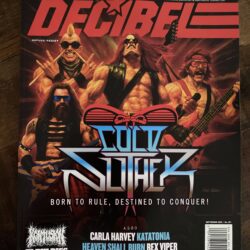
How G.I. Joe-Stanning Supergroup COLD SLITHER Plan to Rule the World
Read how Exhumed, Gruesome, Impaled and KMFDM members payed homage to their young by helping bring the fictional Cobra-backed metal band Cold Slither to life.
The post How G.I. Joe-Stanning Supergroup COLD SLITHER Plan to Rule the World appeared first on Decibel Magazine.
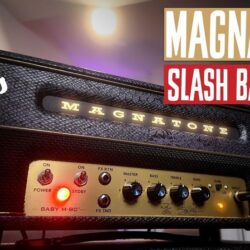
Magnatone Baby M‑80 Slash Edition Demo
PG contributor Tom Butwin jumps into the Magnatone Baby M‑80 Slash Edition—12 watts of tube tone with clean sparkle, crunch, and high‑gain roar. With a master volume, Hi/Lo gain switch, effects loop, and backlit Slash logo, this amp brings full British flavor in a tiny frame. Whether you’re tracking at home or rocking live, it’s a compact beast you need to hear.MagnatoneBaby M-80SLASH SIGNATURE COLLECTIONPortable British-Style Warmth and Drive, Wrapped in Striking Purple Python. Available in a Head/Cab or a Combo.Elevate your rig with the Baby M-80 “Purple Python” edition—where boutique tone meets bold style. Wrapped in hand-selected black and deep-purple snakeskin tolex with deluxe gold piping and hardware, this amp also features a gold-anodized faceplate with Slash’s “Skully” logo. This ultra-portable 12-watt powerhouse delivers the same legendary British crunch and creamy overdrive that Slash calls “the most kick-ass little combo I’ve ever played through.”Beneath its striking exterior, the Baby M-80 is built around NOS 6AQ5 pentode power tubes that deliver 12 watts of warm, responsive output. The 12AX7 preamp section offers two gain settings, allowing you to move from clear, articulate cleans to gently saturated overdrive with the simple flip of a switch. A master volume knob ensures that the amp’s natural character remains intact whether you’re practicing at home or setting up for a small club gig. An effects loop sits between the preamp and power sections, preserving signal integrity when you introduce pedals or rack-mounted processors into your rig.Each “Purple Python” Baby M-80 ships with a premium package of stickers and guitar picks. Handmade in our St. Louis workshop and crafted for tour-ready performance, it’s the perfect compact companion for studio, stage, or home. Designed under the guidance of engineer Obeid Khan, the Baby M-80 “Purple Python” series is offered as a combo, or a head with a matching 1×10″ extension cabinet loaded with a WGS ET 10 Speaker. For guitarists seeking an amp that balances portability, versatility, and a refined visual statement, the Purple Python Baby M-80 represents a thoughtful blend of form and function.
Read more »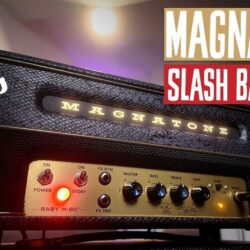
Tom Butwin Tests the Magnatone Baby M‑80 Slash Edition
PG contributor Tom Butwin jumps into the Magnatone Baby M‑80 Slash Edition—12 watts of tube tone with clean sparkle, crunch, and high‑gain roar. With a master volume, Hi/Lo gain switch, effects loop, and backlit Slash logo, this amp brings full British flavor in a tiny frame. Whether you’re tracking at home or rocking live, it’s a compact beast you need to hear.
Read more »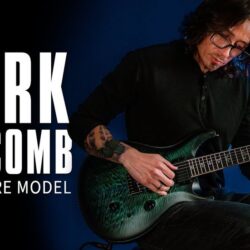
PRS Guitars Adds Mark Holcomb Core Model to Catalog
Previously a limited run, this new signature model will be a constantPRS Guitars today announced the return of a Mark Holcomb six-string signature guitar to the Core Series, 10 years after the original. Offered in 2015 as a limited release only, this new version will be a regular part of the Maryland lineup. Mark Holcomb, renowned for his groundbreaking work with progressive metal band Periphery, brings his signature style and precision to an updated guitar built for versatility and power. The Mark Holcomb model features a mango top, a 25.5” scale length maple neck, and an ebony fretboard with a 20” radius—crafted for speed and precision. Equipped with Holcomb’s signature Seymour Duncan Scarlet and Scourge pickups, this guitar delivers focused low-end punch and crystal-clear articulation, ensuring complex chord voicings, coil-splitting, and drop tunings remain defined and dynamic. The 5-way blade switch unlocks a range of tones, from dual humbuckers in position three, to coil-split options in positions two and four.“This new Core model is a culmination of all of the touring, recording, and writing I’ve done for the last 11 years with PRS and is a product of all the iterations PRS and I have done over that time. This guitar surpasses all of what we’ve established and is my new gold standard for tone and playability. Seeing it come to fruition is nothing short of a dream fulfilled. I couldn’t be more proud of it, and I’m supremely grateful to PRS for their innovation and dedication to perfection,” said Mark Holcomb.The model comes set up with PRS Signature 10-52 strings in Drop C tuning. It is appointed with satin black hardware and available in Charcoal Wraparound Burst, Holcomb Wraparound Burst, Holcomb Blue Wraparound Burst, Cobalt Smokeburst, Fire Smokeburst, Gray Black, and Purple Mist Wraparound Burst.Holcomb’s innovative riffing, a cornerstone of Periphery’s dense triple-guitar sound, comes to life on stages worldwide with his PRS signature models. After the initial collaboration on a limited release of Holcomb signature Core models, Mark worked with PRS to create the SE Holcomb and the seven-string SE Holcomb SVN. PRS Guitars continues its schedule of launching new products each month in 2025. Stay tuned to see new gear and 40th Anniversary limited-edition guitars throughout the year. For all of the latest news, click www.prsguitars.com/40 and follow @prsguitars on Instagram, Tik Tok, Facebook, X, and YouTube.
Read more »Track Premiere: Aleister Cowboy – “Liquefied Bodies Scraped From A Tub”
Denver weirdo beatdown band Aleister Cowboy are back with their third EP, Neolithic Blood Rites, out August 22 You can hear the debut track from the EP, “Liquefied Bodies Scarped From a Tub,” with us first.
The post Track Premiere: Aleister Cowboy – “Liquefied Bodies Scraped From A Tub” appeared first on Decibel Magazine.
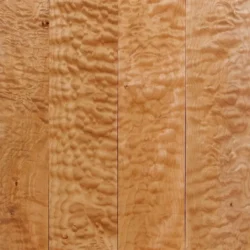
Electric Guitar Tonewood Teardown: Can We Get Good Sounds From Cheap Guitars?
Hello, and welcome back to Mod Garage. You asked for it, and Mod Garage delivers. Today, we will start a new little series and play “custom shop on a budget” together. We’ll talk about what is really important for the amplified tone of an electric guitar and prove all of this on the living object. We’re going to take apart a budget electric guitar down to the last screw, and we’ll see what’s possible to make it an excellent sounding guitar, step by step. I encourage you to follow along by getting yourself a similar electric and working in parallel to the column. For this first installment, let’s have a closer look at the never-dying, snake-oil-drenched urban legends about tonewood on electric guitars and establish some parameters for our experiment. It’s very important to understand that we are talking about tonewood on electric guitars and their amplified tone exclusively; tonewood on acoustic guitars is a completely different thing. The rules for electric guitars are not applicable to acoustic guitars, and vice versa. In general, the whole discussion about tonewood is full of misunderstandings, inaccuracies, conclusions by analogy, biasing, and, of course, marketing bullshit of all kinds. And, sadly, a lot of this has developed into accepted internet knowledge by way of unfounded rumors.Is the wood of an electric guitar the deciding factor of how it will sound? Or does the wood have no influence on its tone? I submit a resolute “no” to both theses: The truth here is much more complex, and, as usual, lies somewhere in between these two points. So, let’s try to find out exactly where that is!There is no plant genus or tree called tonewood on this planet. That’s simply a word that’s intended to describe woods used to build instruments of any kind. In the context of stringed instruments, tonewood usually denotes woods that are traditionally used to build guitars. In the case of electric guitars, woods like alder, ash, maple, rosewood, and mahogany fall into this category, most of which have been used since the earliest days of electric guitar building. Let’s take alder and maple, for example. There are more than 40 alder and no less than 150 maple subspecies. Are they all tonewoods or only some of them? If it’s only some, which ones count? Did Leo Fender define what alder, ash, and maple subspecies get ennobled to tonewood? Let’s take a short journey back in time and see what Leo Fender cooked up in the early ’50s at 107 S. Harbor Blvd., Fullerton, California.For his first electric guitars, Leo Fender used pine for the body (is pine a tonewood as well?) and maple for the neck. He soon switched to ash for the body, but stayed with maple for the neck. Why did Leo Fender choose these woods? Certainly not because of any tonal qualities. Ash and maple are lightweight, strong, easy to work with, and they were available in large quantities for a cheap price at the time. They were the perfect selections for Leo’s mass-production plans. Gibson decided to go with mahogany and maple, but for different reasons that also had little to do with tonal qualities. What exact types of maple, ash, and mahogany were used by Fender and Gibson? Well, nobody knows exactly, and the most likely answer would be: whatever was available cheap and in large quantities. It’s likely that even their wood suppliers didn’t know exactly what subtype they were offering! These woods were probably chosen because of structural, optical, and economic reasons, yet they laid the foundation of the tonewood legend in electric guitars.Interestingly, our bass-playing colleagues seem not to be caught in such paradigms, and all kinds of woods are used to build fantastic sounding electric basses today without the tonewood debate. Try to build a great-sounding electric guitar using cherry, pear, chestnut, oak, or birch; I’d venture that most people will tell you that it doesn’t sound right because it’s not made out of tonewood. Now that we’ve established what tonewood is, let’s talk about the actual tone of these woods. Here’s a common comparison of ash and alder: In general, ash tends to produce a brighter, more articulate tone with good sustain, while alder is known for its warmer, thicker midrange sound. Ash, especially swamp ash, is often described as having a sweet, open top-end with a slightly scooped midrange. Alder, on the other hand, is perceived as having more pronounced mids and a potentially less defined low end. Sound familiar?Here again, we have the problem of missing definitions and inaccuracies: Does this mean all kinds of ash and alder sound the same, no matter what subspecies they are? Is there a kind of general ash or alder tone? Assuming we’re talking about electric guitars, what tone are we discussing—the primary tone when strumming an unamplified electric or the amplified tone? Tonal descriptions are usually missing this important information.“The correct question should be: How much of these tonal differences will be audible in the electrified tone of an electric guitar? Is the amplified tone simply a 1:1 copy of the primary acoustic tone?”I think we can all agree that using different woods and hardware has an influence on the primary tone of a guitar, no matter if it’s an acoustic or an electric guitar. A cedar soundboard will create a much different tone than spruce or mahogany on an acoustic guitar, and an alder body on a Strat will sound different than ash, maple, or mahogany when playing it unamplified—not to mention the tonal impacts of different types of hardware on the guitar. So, the correct question should be: How much of these tonal differences will be audible in the electrified tone of an electric guitar? Is the amplified tone simply a 1:1 copy of the primary acoustic tone? Well, let’s try to find out.A common scenario you can observe in guitar shops and on countless YouTube videos is the mandatory “dry test” when checking out a new electric guitar. The electric guitar is played like an acoustic guitar without being plugged into an amp. You can hear a lot of different answers for why such a test is important: You can feel how the wood resonates, what sustain it has, what overall tone it has, how much high-end chime is present, what the attack is like, etc.Interestingly, all too often, criteria like playability and comfortability, defining how the guitar individually suits you, are omitted. How does the shape of the neck, the size of the frets, and the edge of the fretboard feel? How does the shape of the guitar fit your body when seated and standing? How does it intonate, how is the action, and how heavy is it? All of these factors determine to what degree the guitar will be a part of you, just like buying new jeans. But what about the countless claims that the elements you hear in the dry test will be heard through the amp, too? Are these overly simplistic conclusions reached by analogy mixed with confirmation bias—an all-too-human reasoning process? Well, we’ll see.You will have noticed that I haven’t made a single judgement until now; I’m just collecting facts and asking questions, and I encourage you to think and research about all of these things yourself until next month.That’s when we will continue and finish our journey through the fantastic world of tonewoods for electric guitars, so stay tuned!Until then … keep on modding!
Read more »
